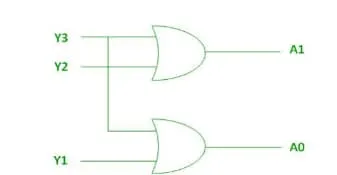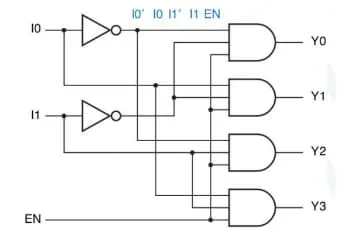Used to facilitate efficient data transmission by reducing the number of data lines required. Falls under medium-scale integrated (MSI) circuits group.
Encoder
Section titled “Encoder”Converts input lines into output lines where .
In simple encoders, in the input lines, maximum one will be active at a time.

Priority Encoder
Section titled “Priority Encoder”Input lines are given a priority. When 2 or more input lines are activated, the highest priority input will take precedence. An improvement over simple encoder at the cost of extra logic. Used in interrupt controllers and as positional encoders.
Decimal to BCD Encoder
Section titled “Decimal to BCD Encoder”Converts each digit of a decimal number into its 4-bit binary equivalent. For example, becomes and .
Octal to Binary Encoder
Section titled “Octal to Binary Encoder”Converts octal digits (each represented by 3 bits) into binary. Example: Octal becomes binary .
Hexadecimal to Binary Encoder
Section titled “Hexadecimal to Binary Encoder”Converts each hex digit (represented by 4 bits) into binary. Example: becomes .
Decoder
Section titled “Decoder”
Opposite of encoder. Have inputs and outputs where .
Decoders are by-default active HIGH. If made using NAND gates, then it will active LOW.
By default, the decoder require a -input AND gates, which is bad as increases. The solution is to build higher order decoders using smaller decoders.

Each output in the decoder is a minterm. Using a set of OR gates, The minterms can be combined to implement any function.